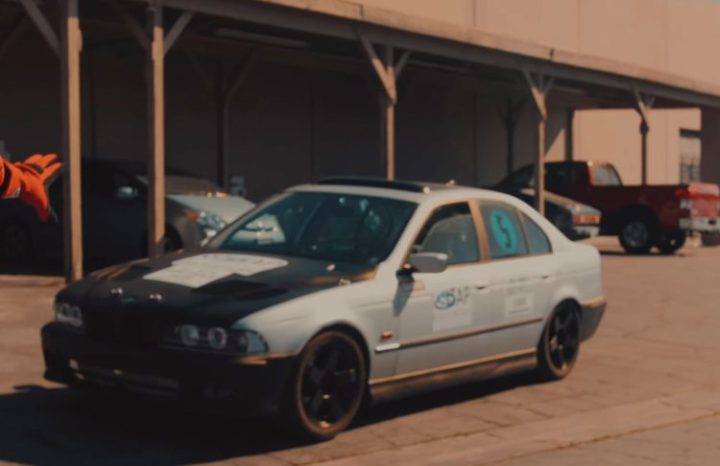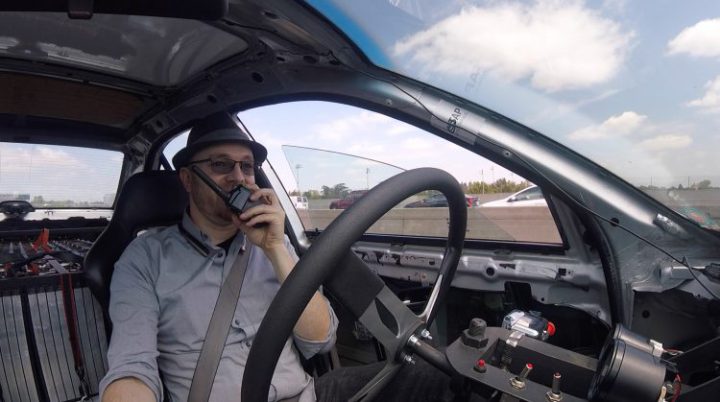Self-proclaimed “e-waste pioneer”, Eric Lundgren, has won a battle of the electronic vehicles – outdoing the range of a Tesla Model S P100D with his own ingenious creation – an electronic car made from trash and powered by repurposed batteries from a games console, a laptop and cable box.
The DIY long-range electronic vehicle, known as the Phoenix, was built by Eric Lundgren and his e-waste recycling company ITAP, in 35 days at a cost of $13,000 using 88% consumer waste.
The chassis of the car is a 1997 E39 528i BMW chassis. When Eric Lundgren purchased it from a landfill, it had a blown motor. “I think we spent 500 bucks at a landfill,” he said.
ITAP CEO and founder, Eric Lundgren, went on a range test with the Phoenix, matching his trash car in range against a handful of electronic vehicles.

Last month, Eric Lundgren’s Phoenix trash car broke the world record for longest EV range, outlasting a Tesla Model S P100D on a round-trip from the San Fernando Valley in Los Angeles down to San Diego and back.
This was the second time Eric Lundgren and his team had tested the vehicle’s range against other electric vehicles including the Tesla Model S P100D. His team had already set the EV range record but Guinness World Records didn’t accept the results because of missing film footage of the event, so they gave it another go with cameras on for the entire race.
The purpose of the stunt was not really about electronic vehicles at all but rather to raise awareness of what the e-waste pioneer calls “hybrid recycling”, a term he coined to highlight the tremendous amounts of electronic waste that Americans generate.
Hybrid recycling involves reusing the components in broken electronics or outdated electronics so that they don’t end up in toxic landfills.
Eric Lundgren believed if he could take trash and use it to beat brand new EVs on the road, that would draw attention to his mission of diverting valuable electronics from landfills and back into use.
Speaking about the Phoenix and the EV range test in an interview with Inside EVs, Eric Lundgren said: “We set out to prove a point. We really want to bring awareness to hybrid recycling, which is an inefficiency in America. Basically, revolving around electronics. It’s not a sexy topic. Since we do that on a micro level, I decided to blow it up into a macro level just to garnish attention, and to gain interest from people that would otherwise not care about hybrid recycling.
“I also wanted to push the EV industry. I own two of those cars that go 90 miles on a charge. They’re just annoying. I also own a Tesla. I spend, or my company spent, $145,000 on this Tesla, and it gets 255 miles with a nine percent degradation the first year out. I’m big fan of Tesla. They make really cool looking cars. I’m a big fan of Elon Musk, except when it comes to hybrid recycling. That company is not practicing hybrid recycling, and they should be. They’re the industry leader when it comes to green, and environmental inefficiency. The thought that they just melt their battery packs irks me being that it’s my industry.”

Eric Lundgren’s company ITAP pioneer hybrid recycling – which places emphasis on old technology and its importance and relevance in spite of its owners deeming it now “useless” or of “zero value”.
“We built something that is the most valuable because it just beat a world record,” he said. “So we’re demonstrating the value in garbage and trying to educate the public and corporations to start practicing hybrid recycling, which is a way of saving that value rather than destroying it.
“I’m hoping that if nothing else, those out there, the powers that be, will be pushed and motivated to start practicing hybrid recycling. When I say the powers that be, I mean corporations that manufacture these electronics, but then, in many cases, don’t actually salvage the working parts and components, or let others salvage the working parts and components for different applications away from the auto industry.
“When it’s mandatory to put something into a landfill, that’s just an archaic solution to the fastest growing waste problem in the world, which is electronic waste. If we do things like this, and nobody hears about them, then we’re having a rock concert in the middle of the woods with nobody listening. When you drop your electronic device in America, we instantly identify cosmetic defect as functional defect. We identify that if it has one functional defect, now it’s trash. It’s been ingrained in us as a consumer society.”
Eric Lundgren admits the concept of hybrid recycling often “throws people off”. For that reason, he has created stunts like the Phoenix in order to get people to become aware of the issues.
His next awareness-raising mission is to build a solar power array out of used batteries, made from over 95% trash. It is expected the solar power array will go on tour with a well-known rock band. “They [the rock band] are going to play every one of their rock concerts off of garbage, off of what consumers threw away,” he said.
For more information about hybrid recycling, check out ITAP here
Rosalind Medea is Life & Soul Magazine’s Chief. She is a writer who specialises in sustainable lifestyle and living, wellbeing, music and arts. Rosalind also works as a counsellor, intuitive reader and spiritual life coach helping people to become who they truly are and manifest their heart & soul’s desires into their lives: www.rosalindmedea.com







